Kennedy and FDR Swam in the Space That is Now the White House Press Room
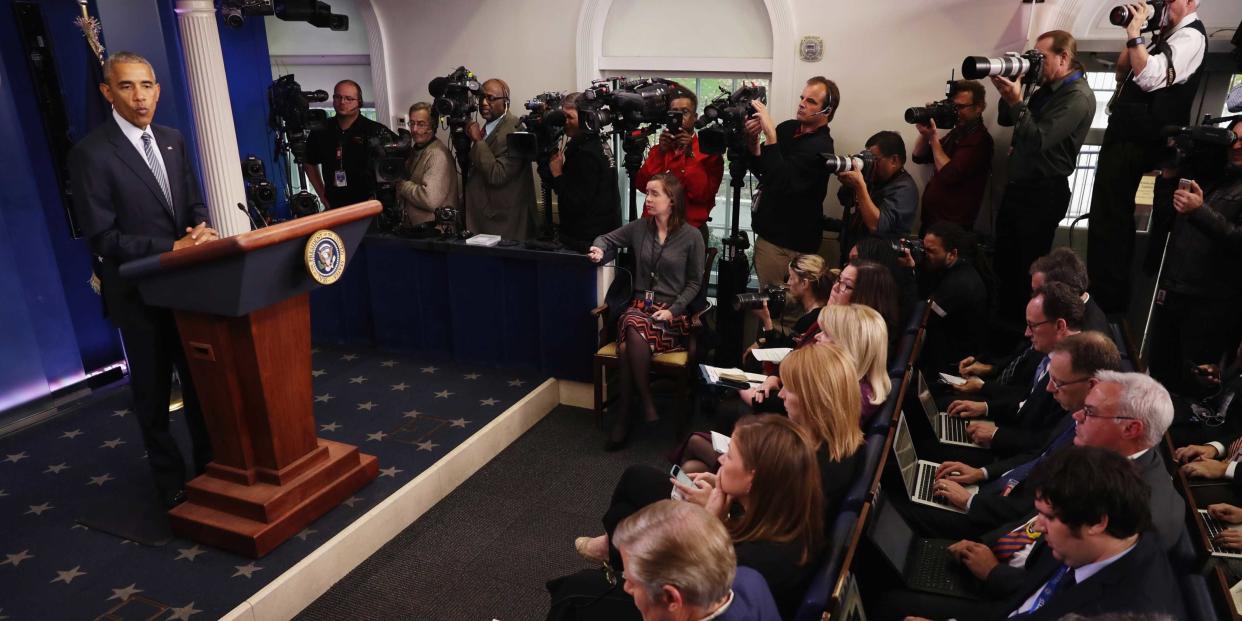
This weekend, Esquire broke the news broke the news that the Trump administration may evict the press corps from the White House. Off the record, the reason was clear: "They are the opposition party," sneered the unnamed senior Trump administration leaker, "I want 'em out of the building. We are taking back the press room." Sean Spicer, Trump's press secretary, walked the dog back a bit on the record: "There's been no decision, there's been some discussion about how to do it."
"It" would mean moving the press room from the coveted real estate on the West Terrace adjacent to the West Wing to a new space, either next door to the Old Executive Office Building or across the street to the White House Conference Center near Lafayette Square.
This may seem benign to outsiders, but make no mistake: In a town where proximity to power is everything, where grown men and women would forsake a football field size suite of offices in the OEOB for a shared cubicle in a bullpen in the West Wing, this approximates a First Amendment constitutional crises (notwithstanding that even the Washington Post has called the press center "among the dingiest dumps in Washington").
Mr. Trump is not the first new president to square off with the press over the idea of evicting them from their prime office space.
The leak was hardly dry when Jeff Mason, President of the White House Correspondents Association, lodged an official protest: "We object strenuously to any move that would shield the president and his advisers from the scrutiny of an on-site White House press corps." The Sunday morning news shows the next day hyped the brewing donnybrook like a heavy weight championship.
But unmentioned by the press-until now-is that Mr. Trump is not the first new president to square off with the press over the idea of evicting them the prime office space they have occupied since 1970. Back in 1974, on his third day in office, President Ford hatched a top secret plan to take back the press room. It had nothing to do with any animus towards the press, though. He just wanted to swim.
Under the floor of the James C. Brady Press Briefing Room, as it is formally named, lies the original White House pool, disused since Richard Nixon nixed it in 1969 to make room for the burgeoning television press.
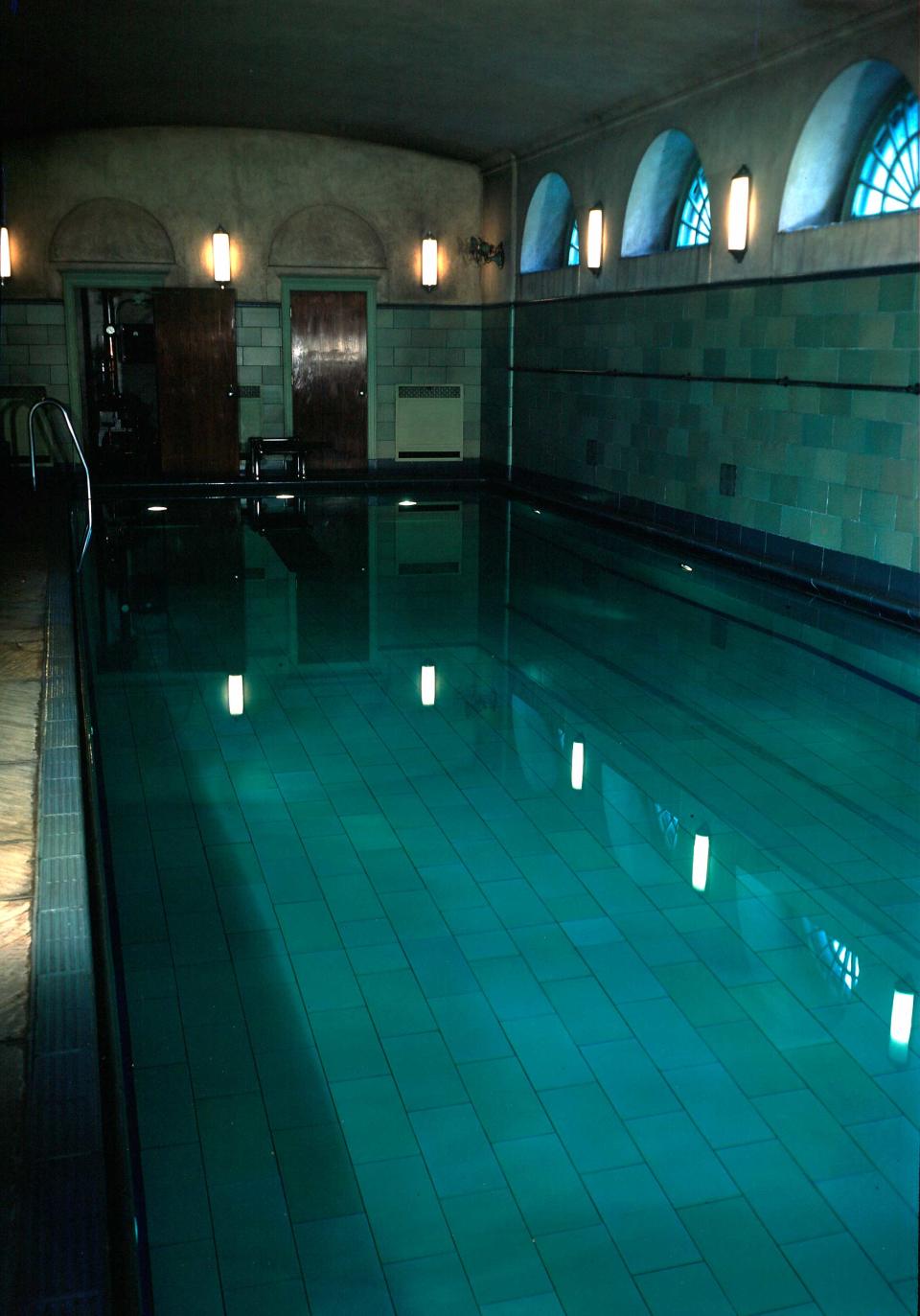
The idea for a White House pool belongs to Captain Joseph Patterson, publisher of the New York Daily News and a staunch Franklin Roosevelt man. On March 14, 1933, ten days after FDR took the oath of office and in the midst of the banking crisis, the Daily News announced a public fundraising campaign to build a pool in the White House so that the polio-stricken president would be able to conveniently swim, one of the few physical activities his affliction allowed him to enjoy.
"Help build a pool for Roosevelt," read the front page caption along with four pictures of FDR swimming. "Franklin D. Roosevelt, who is leading the country out of depression, must have a pool for his health. There is none in the White House. Therefore, today the News undertakes to act as medium for the citizens of New York State to express affection for FDR by giving him a pool."
Patterson pledged $1,000. The March of Dimes soon joined, encouraging school children to send in their coins. Despite the depths of the Depression, the money was raised and the pool constructed in record time, less than three months.
FDR took the first dive in the pool on June 3, 1933. "I built a pool once myself and did all the designing and all the work", he told the construction workers at the ribbon-cutting ceremony, "and when I completed it, the pool fell in ! The pool that you built will stand up."
FDR used the pool daily when in residence at the White House, frequently joined by top advisers and guests. He offered Joseph P. Kennedy the chairmanship of the newly-created Securities and Exchange Commission right after they took a late night dip in the pool.
Harry Truman frequently used the pool as well, to the snickers of the White House staff who noticed he would always swim with his spectacles on. Eisenhower used the pool less, despite being encouraged to do so for the exercise by Dr. Howard G. Snyder, the White House physician who worried about Ike's ailing heart.
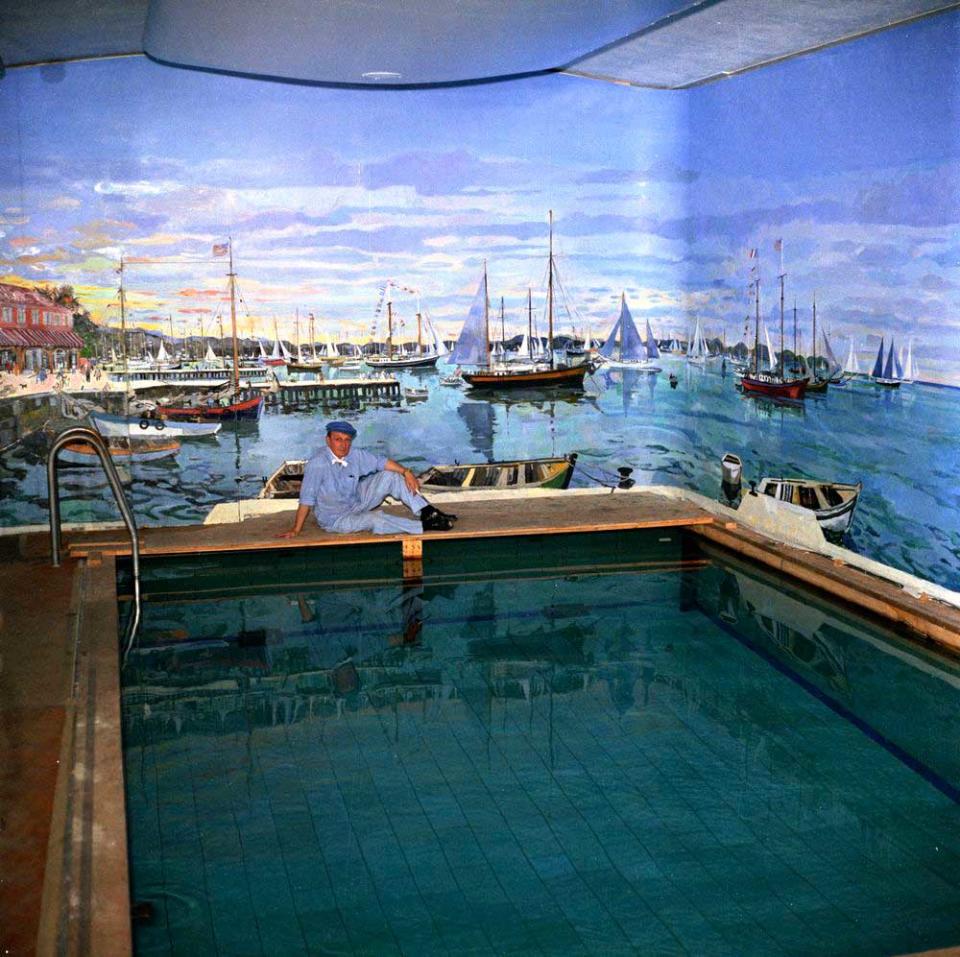
John Kennedy used the pool more than any other president save FDR. It soothed his war-ravaged back. As a gift from his father, who perhaps fondly remembered that his own storied career in public service began with a swim there, Joseph P. Kennedy commissioned Impressionist artist Bernard Lamotte in 1962 to paint a large mural along three walls of the pool room depicting the harbor at Christiansted, St. Croix.
Kennedy was egalitarian when it came to use of the pool, inviting staffers of all rank to join him for lunchtime swims, usually accompanied in the water by Charlie, the First Dog.
Kennedy was egalitarian when it came to use of the pool, inviting staffers of all rank to join him for lunchtime swims, usually accompanied in the water by Charlie, First Dog, a Welsh terrier. (Years later, in a widely discredited book, Seymour Hersh would print mean-spirited gossip, suggesting that perhaps more than backstrokes were taking place in the pool.)
President Johnson notoriously had issues with boundaries with his aides, and his use of the pool was not an exception. Staff would find any credible excuse to scatter whenever LBJ expressed a desire to take a swim, for not only would he swim in and lounge around the pool completely naked, but would insist that others do the same. In a scene that is most unsettling to imagine, he once cajoled the preacher Billy Graham to join him in one of his skinny-dipping sessions. (They prayed together in the water.)
In his early days in the White House, Nixon found he rarely used the pool, so when the problem of what to do with the expanding White House television press arose, he thought converting the pool to a new press room an ideal solution.
Its hard to imagine today, but until the late 19th century, the press barely covered the presidency; Congress was thought to be where the action was. It wasn't until Grover Cleveland's second term that an intrepid reporter from the Washington Evening Star, delightfully named Fatty Price, began hanging around the White House entrance fishing for copy.
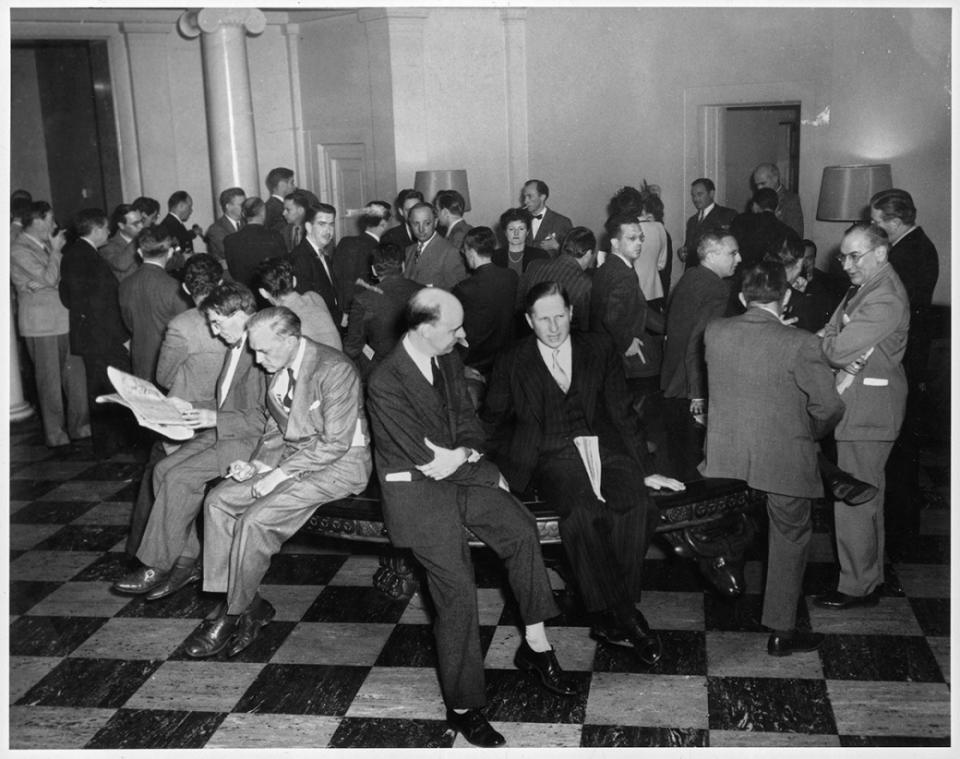
Teddy Roosevelt was the first president to give the press an official office, in 1902, and until Nixon constructed the current press room with its 49-seat amphitheater, there was no fixed location for briefings or presidential press conferences, which were usually informal affairs, most often off the record.
Television changed all that, and beginning with Truman, formal press conferences began taking place in the Indian Treaty Room. Most of the press didn't think the change an improvement. In 1950, a writer for the Washington Daily News wrote that the Indian Treaty Room "resembles the interior of a Chicago meat packer's mansion or possibly the main reception room of a lady engaged in another business."
Nixon built the press room for $574,000, a price inflated by his directive that nothing be done to prevent the conversion back to a pool. As Randall Vosbeck, the project's architect, remembered: "We were told in no uncertain terms that Nixon did not want any harm done to the pool, and the design of the press room must be done in such a way that the pool could be restored easily, apparently in case he received comments that he destroyed the FDR pool." Nixon even arranged for the Bernard Lamotte murals to be donated to the Kennedy Library.
On August 12, 1974, two workmen, one carrying a shovel, opened a carpeted hatch in the White House press room and descended down a hidden stairway and began making measurements. They ignored a reporter's questions regarding what they were doing.
The night before, President Ford, spending one last night at his home in Alexandria, Virginia before moving into the White House private quarters, relaxed with newsmen around his backyard pool. "I will miss the swimming pool here very badly," he lamented. The press corps connected the two events and soon rumors were swirling that the pool would be reopened and the press room moved. Expressions of anxiety and displeasure quickly made their way back to the unelected Ford, who wished very much to improve relations with the press that had suffered greatly under his predecessor.
Ford left the press room where it is, settling for a modest $61,417 outdoor pool constructed with private donations on the South Lawn just outside the West Wing. With an army of press and photographers watching, Ford swam laps in the new pool on July 1, 1975.
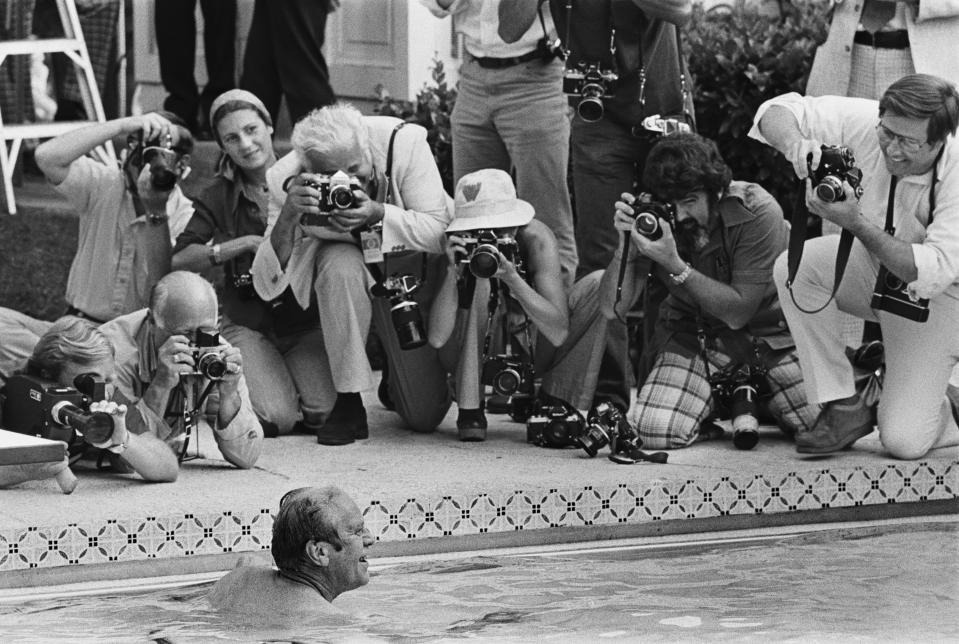
But what of those two workmen and their shovel? By way of the Freedom of Information Act, the truth can now be told: Ford did plan on evicting the press so he could have this pool. A smoking-gun memo dated August 28, 1974 from assistant press secretary Larry Speakes spelled out the plot: A committee of leading Americans, including Senator Barry Goldwater, was to be enlisted to rustle public support for the pool, the pool was to be reopened and the press room was to be moved south of the West Wing, either above-ground at an estimated cost of $871,000 or below-ground at an estimated cost of $2,000,000. Ultimately, the cost scared Ford off. At a time when he was calling on the country to sacrifice to whip inflation he couldn't be seen to be profligate for a pool.
Ford did plan on evicting the press so he could have this pool.
Today, walking down the same steps as those workmen has become a right of passage for the First Family, White House staff, the press corps and visiting dignitaries. Those who are allowed to descend are encouraged to write a message on the darkened, dry old tiles of FDR's empty pool walls. The graffiti includes that of Bono, Sugar Ray Leonard, First Lady Laura Bush and dozens of prominent reporters, staffers, politicians, and celebrities.
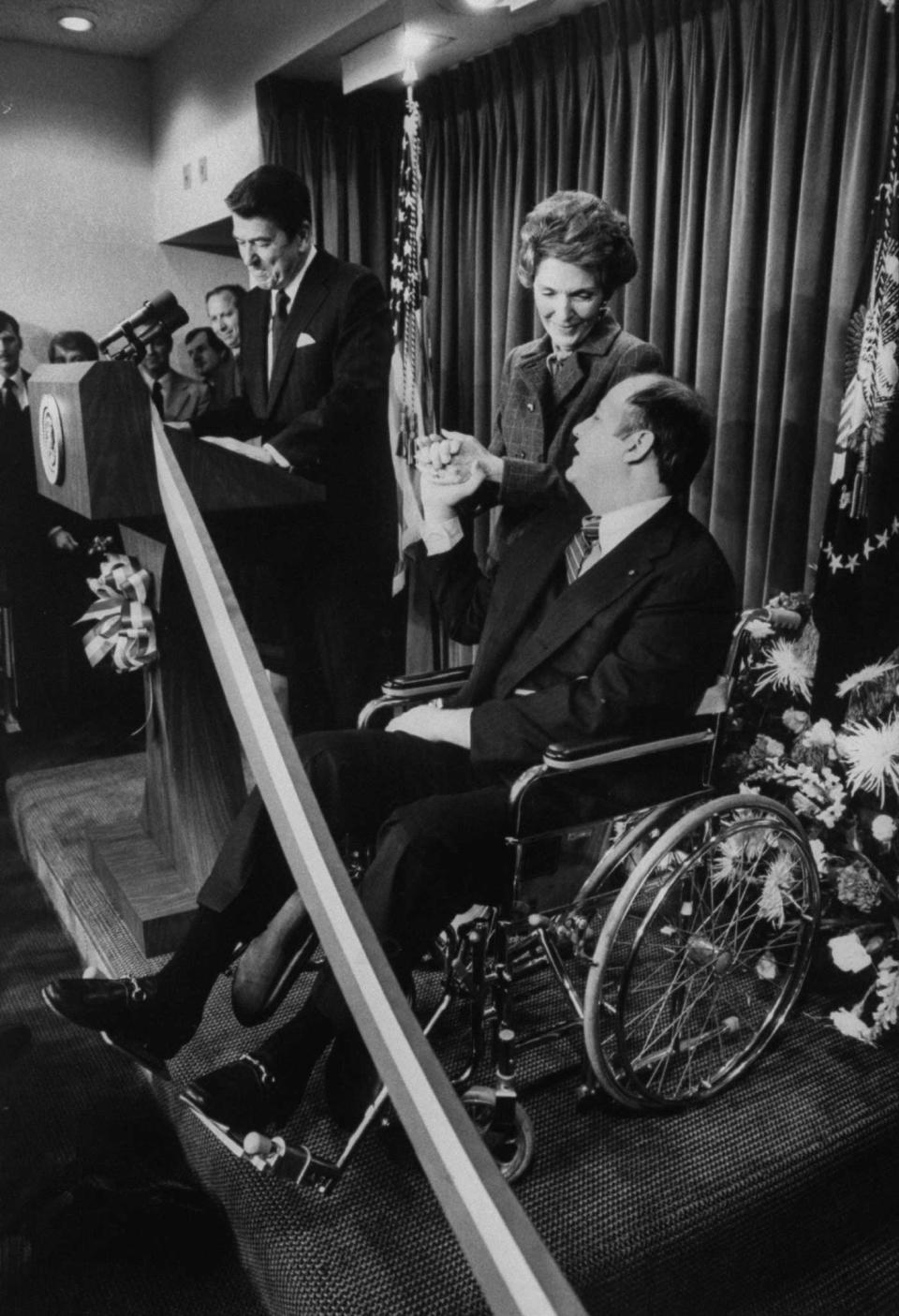
You Might Also Like

